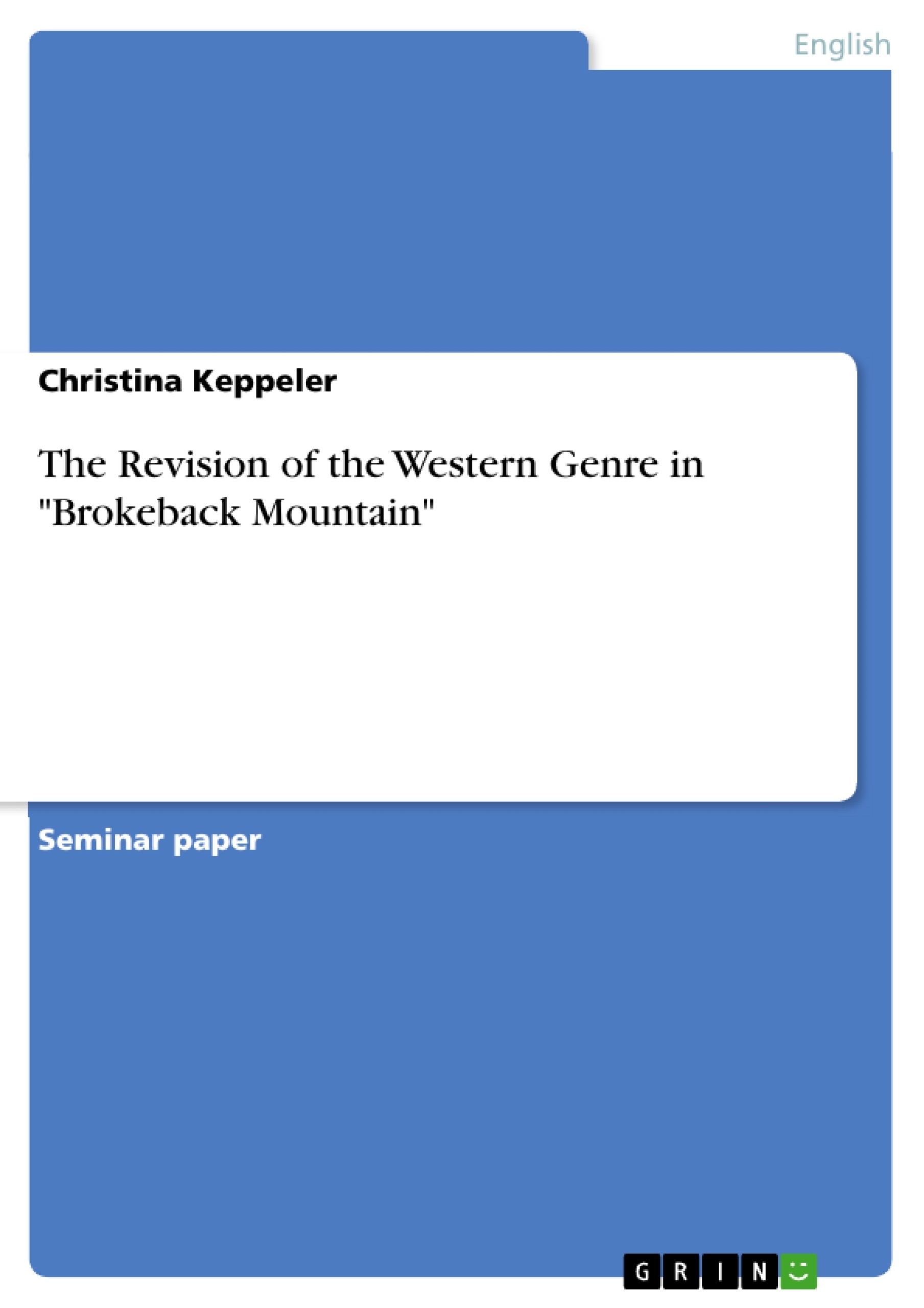As the issue of homosexuality in the context of the Western has never been so openly expressed as in "Brokeback Mountain", it seems not surprising that the movie on the other hand also evoked highly critical and often homophobic voices. Such responses included for instance David Kupelian, a conservative journalist, calling Brokeback Mountain “The Rape of the Marlboro Man”. Statements like this purport that the film struck America right at the heart and put highly praised and sacred American values into question. It also proves that the genre of the Western contains archetypical and conservative constructions of gender and sexual expression.
As the documentary film "The Celluloid Closet" (1995) conveys, the subject matter of homosexuality indeed has a relatively long tradition in Hollywood cinema, but mostly could not manage to depict gays in an equal and appropriate way. Often the movie’s gay characters were portrayed as either exaggerated versions of what heterosexuals imagined as ‘gay’, as comic characters like ‘the gay best friend’ or the seductive villain, that gets sanctioned in the end.Gayness combined with classical Western motifs is groundbreaking, because it on the one hand rises mainstream Hollywood cinema on a new level, but on the other hand touches the audience by humanizing gay love for the very first time in that manner. "Brokeback Mountain" goes without categorizations and stereotypes, it rather sets the focus on true human emotions: the story of two young men, who unexpectedly fall in love with each other in Wyoming’s wilderness and in the end ultimately fail.
Beyond the aspects of heteronormativity and in connection with it homophobia, the film reshapes or at least challenges imaginings of American national identity. In this paper I want to outline ideological concepts which are closely connected to the imagination of the American West and the impact they have on America’s self-understanding. Furthermore my essay will focus on the film's cinematographic language to portray Western landscapes, in what way the movie can be connected with classical conventions of the Western genre, to what extent it depicts iconic images like the cowboy and, on the other hand, how gender identities are constructed out of it. The focus of my argumentation is thereby to illustrate that Brokeback Mountain critically exposes questions of American identity as such by revealing inherent ambiguities in the conceptualization of the American West.
Table of Contents
- Introduction
- The American West
- Myth and Self-Identification
- The West(ern) and its Cultural Significance
- Gay Cowboys: Homosexuality and the Western
- Brokeback Mountain: Establishing the West
- The Wilderness-Civilization Dichotomy
- The Nature of Desire: Brokeback Mountain
- Urban Spaces: Painful Domestication
- The Wilderness-Civilization Dichotomy
- Gender Constructions and Homosexuality
- The Cowboy Image as a Sacred Icon and Embodiment of Masculinity
- The Legitimization of Violence: The Regeneration of Male Dominance
- Brokeback Mountain and Homophobia: "You know, I ain't queer"
- Conclusion
Objectives and Key Themes
This essay examines the portrayal of homosexuality within the context of the American Western, specifically focusing on Ang Lee's film adaptation of Annie Proulx's short story, "Brokeback Mountain." The essay aims to analyze how the film challenges traditional notions of American national identity and gender constructions, particularly through its exploration of the Western landscape and the iconic figure of the cowboy.
- The role of the American West in shaping American national identity and its connection to themes of freedom, individualism, and progress.
- The portrayal of homosexuality and its relationship to the Western genre, including the iconic image of the cowboy and traditional notions of masculinity.
- The film's exploration of the wilderness-civilization dichotomy and its impact on the characters' desires and relationships.
- The implications of Brokeback Mountain for American cultural values and the challenges it poses to traditional notions of gender and sexuality.
- The film's use of cinematic language to portray the Western landscape and its significance in shaping the narrative.
Chapter Summaries
The introduction sets the stage for the essay by discussing the significance of "Brokeback Mountain" as a cultural phenomenon and its impact on American society. It highlights the film's critical reception, particularly the homophobic responses, and the film's groundbreaking portrayal of homosexuality within the Western genre.
Chapter 2 explores the historical and cultural significance of the American West, emphasizing its role in shaping American national identity. It discusses the concept of "Manifest Destiny" and its influence on the westward expansion of the United States, as well as the enduring impact of the Western myth on American culture. The chapter also examines the connection between the American West and themes of freedom, individualism, and progress.
Chapter 3 analyzes the film's portrayal of the Western landscape and its significance in establishing the narrative. It discusses the film's use of the wilderness-civilization dichotomy and its impact on the characters' desires and relationships, particularly in relation to the themes of love, sexuality, and societal pressures.
Chapter 4 examines the film's portrayal of gender constructions and the ways in which the cowboy image is challenged and redefined. It discusses the film's representation of masculinity and its exploration of the complexities of sexual identity within the context of the Western genre.
Chapter 5 focuses on the film's exploration of homophobia and its impact on the characters' lives. It examines the societal pressures faced by Jack and Ennis, particularly in relation to the conservative cultural values of the time period.
Keywords
This essay examines the themes of American national identity, the Western genre, homosexuality, gender constructions, the wilderness-civilization dichotomy, and the film's cinematic language. It explores the complex relationship between these themes and their significance in shaping the narrative and cultural impact of "Brokeback Mountain."
- Quote paper
- Bachelor of Arts Christina Keppeler (Author), 2013, The Revision of the Western Genre in "Brokeback Mountain", Munich, GRIN Verlag, https://www.grin.com/document/340830



